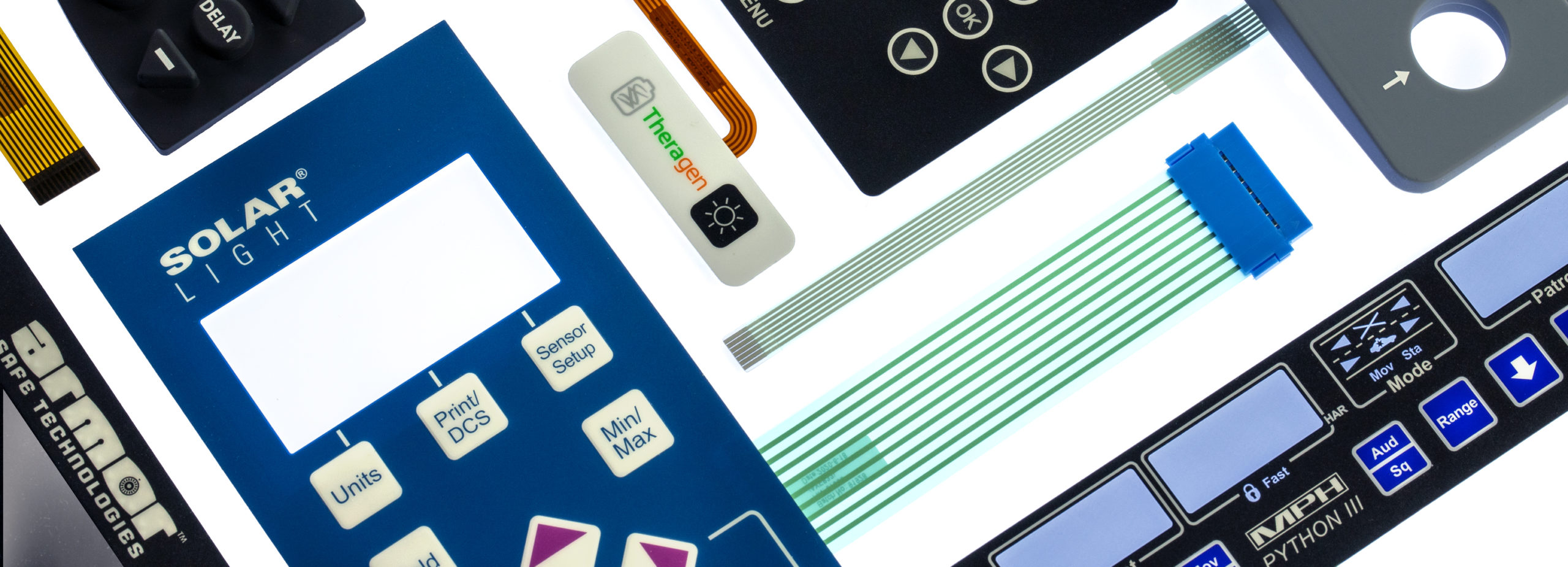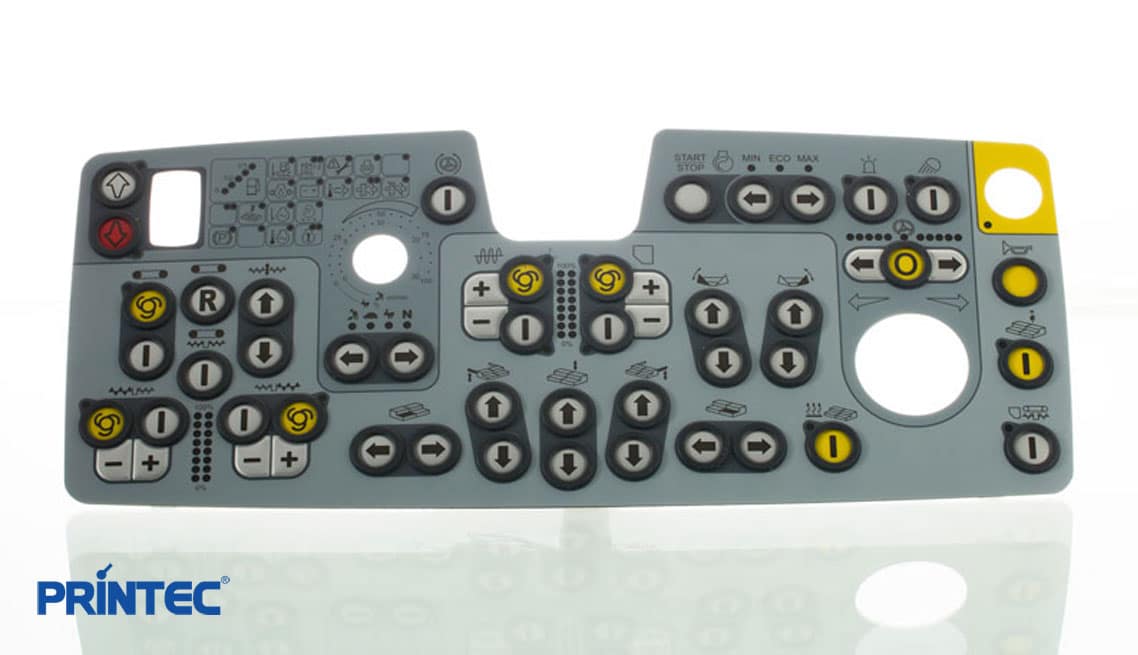Discover the Future of Control Interfaces: Why Membrane Switches Over Are Getting Popularity
As sectors increasingly prioritize reliable and user-friendly control interfaces, membrane layer switches are arising as a compelling option that incorporates functionality with style adaptability. With the rise of wise modern technology and sustainability problems, the capacities and developments surrounding membrane changes warrant better exam.
Understanding Membrane Switches
Membrane switches are indispensable parts in modern electronic devices, functioning as interfaces in between customers and equipments. These switches contain several layers, commonly consisting of a visuals overlay, a spacer layer, and a circuit layer. When a customer presses a switch on the overlay, the leading layer reaches the circuit layer, completing a circuit and sending a signal to the device. This simple yet effective mechanism enables seamless interaction with technology.

Longevity is one more essential feature, as membrane buttons can be developed to withstand environmental aspects such as moisture, dust, and chemicals. This resilience makes them excellent for applications in rough problems. Overall, recognizing the structure and function of membrane layer buttons is crucial for valuing their duty in the evolution of user interfaces in today's technology-driven globe.
Trick Advantages of Membrane Layer Buttons
Providing a variety of benefits, membrane switches have ended up being a preferred option in various applications (Membrane Switches). One of the primary advantages is their compact design, enabling makers to optimize room in devices without endangering functionality. Membrane switches are lightweight, which is particularly important in portable digital tools

Furthermore, these switches supply exceptional sturdiness. Built from versatile products, they are immune to dust, wetness, and a selection of ecological elements, making them ideal for rough conditions. This resilience frequently translates right into a much longer life-span contrasted to typical mechanical switches.
Moreover, membrane layer switches enable smooth combination of symbols and graphics, offering aesthetic flexibility and enhancing user experience. Personalization alternatives are extensive, enabling brands to develop unique user interfaces that straighten with their item identity.
An additional key advantage is their ease of cleaning and upkeep. The flat surface area of membrane switches prevents the build-up of dust and crud, making them perfect for hygienic atmospheres. Lastly, membrane buttons are affordable, as they can be created in high volumes at lower expenses, making them obtainable for a wide variety of markets. These aspects jointly add to their enhancing appeal in modern-day control interfaces.
Applications Across Industries

A myriad of industries are significantly adopting membrane layer switches due to their convenience and capability. These control user interfaces are especially prevalent in the auto sector, where they are made use of in control panels and infotainment systems, giving a streamlined and easy to use user interface. In the clinical area, membrane layer switches assist in the operation of diagnostic equipment and index client tracking systems, guaranteeing dependability and ease of usage in crucial circumstances.
Additionally, the customer electronics market gain from membrane switches in devices such as microwaves and remote controls, enabling streamlined layout and improved durability. Membrane Switches. The aerospace sector likewise utilizes membrane buttons in cabin controls, where area constraints demand compact and effective layout remedies
Additionally, the industrial field uses membrane switches in equipment control panels, providing durability versus rough settings and guaranteeing operational effectiveness. Retail environments have embraced membrane layer switches in point-of-sale systems, boosting user communication while keeping visual allure.
Style Trends in Membrane Layer Switches
Developing along with technical advancements, style trends in membrane layer switches are significantly concentrated on improving user experience and visual allure. Modern membrane layer buttons are being created for simplicity and instinctive use, permitting individuals to browse interfaces effortlessly. This shift in the direction of user-centric style stresses tactile comments, guaranteeing that users receive immediate confirmation of their actions.
In addition, personalized graphics and shades are becoming typical attributes in membrane switch styles. This adaptability enables makers to create personalized user interfaces that straighten with branding and specific individual needs. The unification of backlighting is one more noticeable fad, as it not just improves exposure in low-light conditions but also adds a visually striking element to the overall style.
Moreover, the pattern in the direction of slim and lightweight products is gaining grip, enabling sleeker layouts that can effortlessly integrate into numerous applications. This change not just improves check out this site appearances however also adds to the total capability and longevity of the buttons. Eco-friendly materials are significantly being used, mirroring a broader movement in the direction of sustainability in item layout. These design trends collectively underscore the expanding relevance of incorporating form and feature in the growth of membrane switches, inevitably enriching the customer experience.
Future Outlook for Control Interfaces
The future of control user interfaces is positioned for substantial makeover as arising innovations proceed to improve user interactions throughout various gadgets. The integration of advanced products, such as conductive inks and versatile electronic devices, will enhance the adaptability and functionality of membrane layer switches, making them progressively adaptable to a series of applications. In addition, the increase of the Internet of Things (IoT) will certainly drive demand for more user-friendly, easy to use interfaces that can seamlessly integrate with wise Get More Info tools.
As expert system and machine discovering develop, manage interfaces will likely incorporate more personalized functions, permitting users to interact with tools in methods that are tailored to their preferences and routines (Membrane Switches). This shift towards user-centric layout will position membrane buttons as a vital player on the market, especially in markets like healthcare, vehicle, and customer electronic devices
Furthermore, the promote sustainability will encourage manufacturers to explore eco-friendly products and manufacturing techniques, guaranteeing that the future of control user interfaces straightens with ecological factors to consider. Generally, as innovation continues to breakthrough, membrane switches will end up being increasingly advanced, leading the way for innovative control options that boost user experience and functional performance across varied sectors.
Final Thought
Finally, the increasing fostering of membrane changes highlights their importance in the evolution of control interfaces. Their small style, durability, and modification alternatives align with the needs of contemporary innovation throughout various industries. As straightforward user interfaces come to be essential in the context of IoT and AI advancements, membrane switches are positioned to play an essential function. The ongoing patterns in the direction of sustainability even more enhance their charm, ensuring that membrane layer buttons will certainly continue to be essential to future technological developments.
As industries significantly prioritize user-friendly and efficient control interfaces, membrane layer buttons are arising as an engaging option that integrates performance with design flexibility.Resilience is another vital attribute, as membrane buttons can be developed to resist ecological elements such as wetness, dust, and chemicals.Evolving along with technical improvements, layout fads in membrane layer switches are significantly focused on boosting user experience and visual appeal. Modern membrane buttons are being designed for simplicity and user-friendly usage, allowing individuals to browse user interfaces effortlessly. These design patterns jointly emphasize the growing significance of integrating kind and feature in the development of membrane buttons, inevitably improving the user experience.